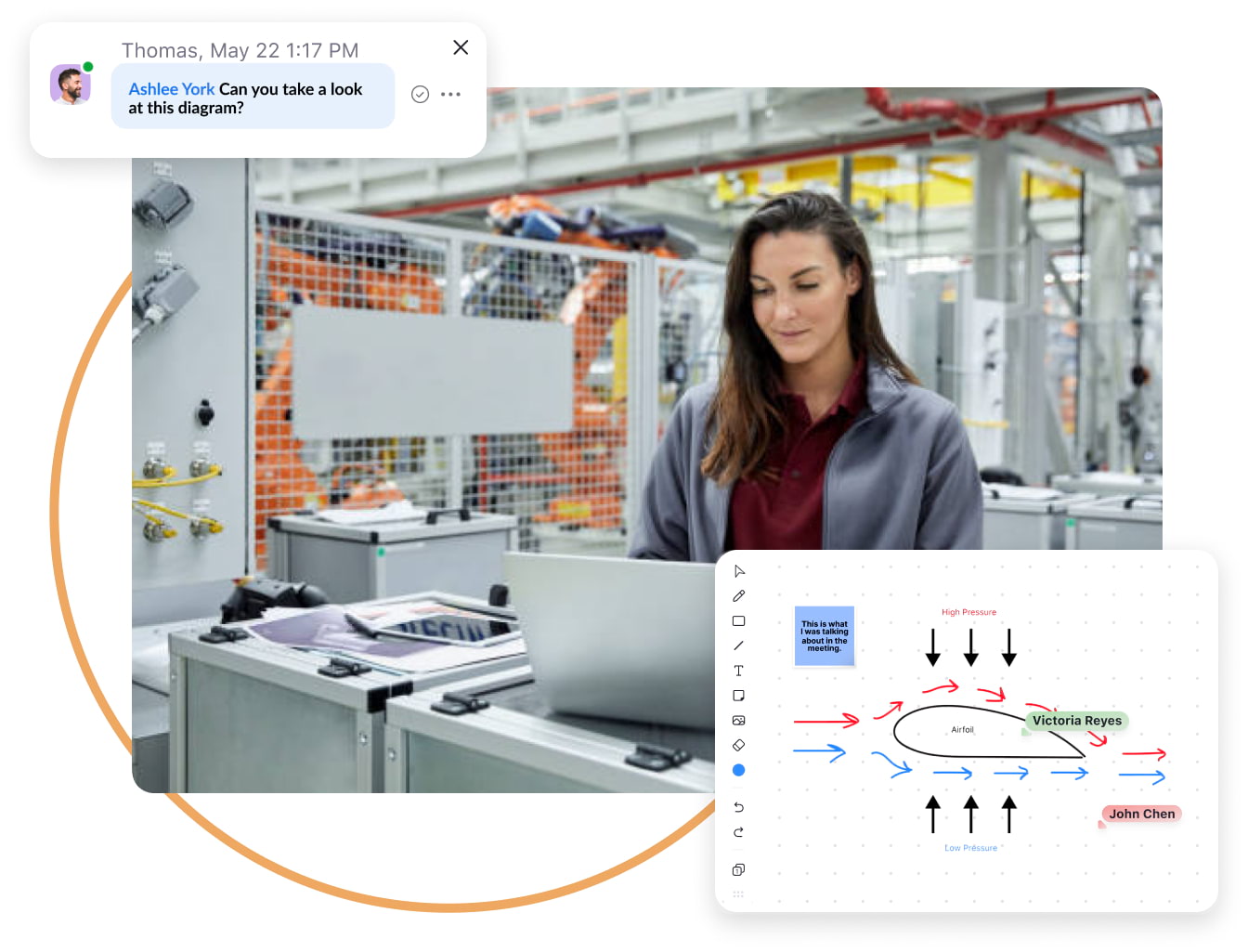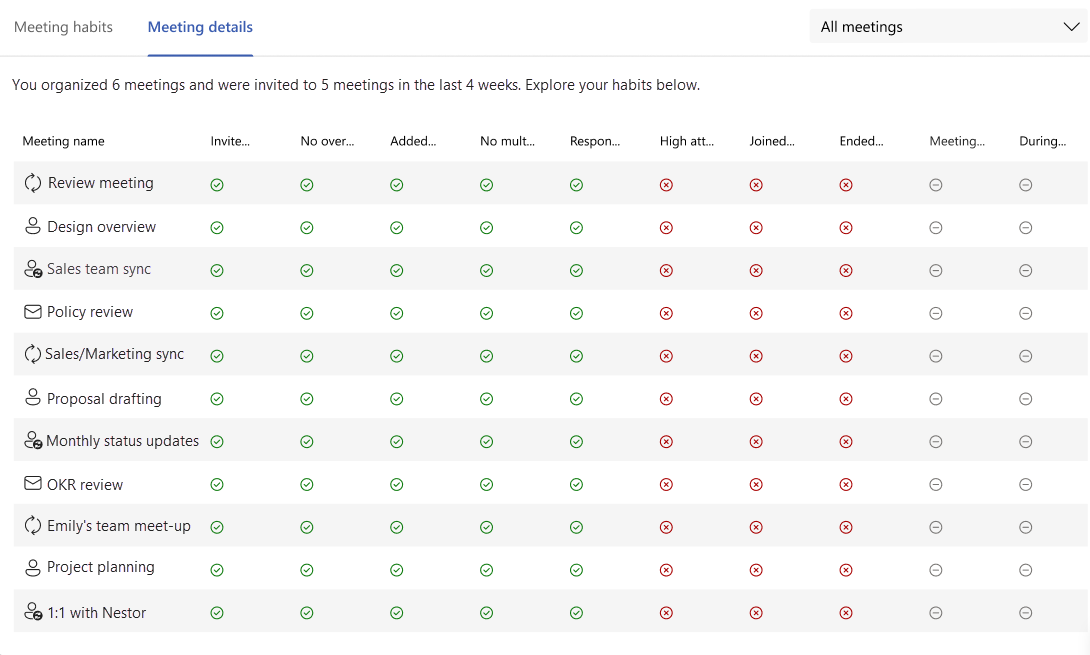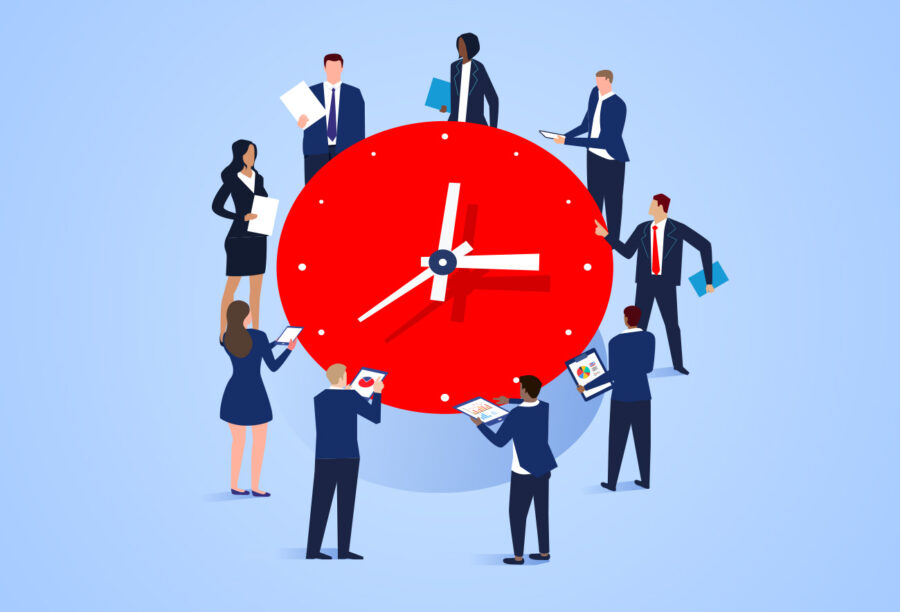Maximize Productivity: Streamline Meetings with Data

In today's fast-paced work environment, meetings are a necessary evil that could quickly derail productivity.
The good news is that we no longer have to rely on intuition or guesswork to optimize our meeting strategies.
By leveraging the power of data, businesses can streamline their meetings and make them more productive than ever before.
Quick Summary
- 1. Meetings waste a lot of time: The average employee spends 31 hours per month in unproductive meetings.
- 2. Meetings can be costly: In the US alone, it is estimated that $37 billion is wasted on unproductive meetings each year.
- 3. Not all meetings are necessary: Many meetings can be replaced with emails or brief check-ins, saving time and increasing productivity.
- 4. Meeting culture can be changed: By setting clear agendas, limiting attendees, and enforcing time limits, meetings can become more efficient.
- 5. Data can help: Collecting data on meeting attendance, duration, and outcomes can help identify areas for improvement and increase accountability.
The Cost Of Inefficient Meetings

The True Cost of Inefficient Meetings
As an industry expert, I've witnessed countless meetings that fail to achieve their intended goals and instead waste valuable time.
Inefficient meetings not only result in lost man-hours but also lead to decreased productivity and morale among team members
The cost of inefficient meetings is staggering!
According to a Harvard Business Review study, executives spend an average of 23 hours per week attending meetings, with more than half being deemed unnecessary or unproductive.
This translates into millions of dollars wasted each year by companies worldwide due to postponed work or missed deadlines because teams are unable to focus on their tasks.
The Negative Impact of Inefficient Meeting Culture
To better understand the negative impact that inefficient meeting culture can bring about within any organization, consider these costs:
- Employees waste around four hours each week preparing for and attending pointless discussions
- Unproductive meetings lead to missed deadlines and postponed work, resulting in decreased productivity and morale among team members
- Wasted time in meetings can lead to increased stress and burnout among employees, which can ultimately lead to higher turnover rates
By recognizing the true cost of ineffective communication practices like wasteful business gatherings we can take steps towards improving our workplace efficiency while saving money at the same time.
Analogy To Help You Understand
Meetings are like traffic jams on the highway of productivity. Just as cars pile up on the road, meetings pile up on our calendars, causing delays and frustration. And just as we can't always predict when a traffic jam will occur, we can't always predict when a meeting will be a waste of time. But unlike traffic jams, which we can sometimes avoid by taking an alternate route, meetings are often mandatory. We're expected to attend, even if we know they won't be productive. And just like sitting in traffic, sitting in a pointless meeting can be incredibly frustrating. But what if we treated meetings like we treat traffic? What if we found ways to optimize our time and avoid the delays? Just as we use GPS to find the fastest route, we can use data to identify which meetings are worth our time and which ones aren't. By tracking metrics like meeting length, attendance, and agenda items, we can start to see patterns and make informed decisions about which meetings to attend. And just like we might choose to carpool or take public transportation to avoid traffic, we can suggest alternative ways to achieve the same goals without wasting everyone's time in a meeting. So let's start treating meetings like traffic, and use data to navigate our way to a more productive workday.The Power Of Data Driven Decision Making

The Power of Data-Driven Decision Making
As an industry expert, I'm thrilled to share the immense potential of data-driven decision making.
By utilizing data in meetings, businesses can optimize their processes and boost productivity
Data empowers us to make informed decisions based on facts rather than assumptions or intuition.
It provides a clear understanding of our organization's performance and highlights areas for improvement.
By integrating data into our meetings, we enhance transparency, accuracy, and actionable insights
Five Compelling Reasons to Embrace Data-Driven Decision Making
- Data eliminates biases: Relying solely on opinions or feelings during discussions leaves room for personal biases that may influence outcomes negatively.
With relevant analytics at hand, facts triumph over subjective views.
- Takes guesswork out of the equation: Managers often spend hours trying to understand what went wrong when something doesn't work as expected.
Relevant analytics provide valuable insights that help identify issues quickly without wasting time guessing.
- Enables proactive problem-solving: When equipped with real-time information about your business operations through dashboards & reports, it becomes easier to spot trends early enough before they become major problems requiring significant resources to fix them later.
- Facilitates collaboration across teams/departments: Sharing accurate metrics helps everyone stay aligned towards common goals while avoiding silos where each team works independently from others leading sometimes conflicting priorities between departments/teams which could lead ultimately affect overall company objectives adversely if not addressed timely!
- Boosts confidence in strategic planning: Having access to reliable historical records enables better forecasting models resulting in more confident predictions regarding future growth opportunities/challenges ahead!
Embracing a culture driven by factual analysis is essential for any modern-day enterprise looking forward!
In conclusion, data-driven decision making is a game-changer for businesses.
It eliminates biases, takes guesswork out of the equation, enables proactive problem-solving, facilitates collaboration, and boosts confidence in strategic planning.
You can use AtOnce's team collaboration software to manage our team better & save 80%+ of our time:
By embracing a culture driven by factual analysis, any modern-day enterprise can optimize its processes and boost productivity.
Some Interesting Opinions
1. Meetings are the biggest time-waster in the workplace.
According to a study by AtOnce, the average employee spends 31 hours per month in unproductive meetings. That's almost four full workdays wasted every month.2. The majority of meetings could be replaced by asynchronous communication.
A survey by Slack found that 72% of employees believe that meetings are not the best use of their time. Instead, they prefer to communicate asynchronously through tools like email and chat.3. Meetings are a form of workplace oppression.
Research by Harvard Business Review shows that meetings are often dominated by the most senior or vocal members of the team, leaving others feeling excluded and disempowered.4. The rise of remote work has made meetings even more inefficient.
A report by Owl Labs found that remote workers are 2.4 times more likely to feel that their meetings are unproductive compared to in-office workers. This is due to technical difficulties and lack of engagement.5. Companies that prioritize efficient meetings have a competitive advantage.
A study by Bain & Company found that companies with effective decision-making processes are 95% more likely to perform better financially than those with poor decision-making processes. Efficient meetings are a key component of effective decision-making.Identifying The Right Meeting Metrics To Track

Boosting Productivity with Meeting Metrics
Tracking the right meeting metrics is crucial for boosting productivity
Identifying which metrics are relevant and necessary can be challenging, but with the right tool for tracking, you'll get there.
In my experience, focusing on a few key areas yields better results.
Attendance Data
Track attendance data over time for each team member who attends your meetings.
This metric will help you understand who's participating consistently and engage those not attending regularly enough.
Agenda Effectiveness
Analyze agenda effectiveness by identifying how many items were discussed during a meeting versus how many were completed in the allocated timeframe.
These two metrics should be priorities when streamlining meetings with data analysis tools.
Measuring attendance rates and analyzing agenda effectiveness provide valuable insights into improving productivity through more efficient meetings.
Other Helpful Metrics
- Measure decision-making turnaround times: this helps pinpoint any delays or bottlenecks that could lead to unproductive outcomes
- Gather feedback from attendees after every meeting using surveys or polls: this provides insight into what worked well and where improvements can be made
Gathering feedback from participants about their experiences allows us to make informed decisions moving forward towards our goals of increased efficiency at work!
Tools For Collecting And Analyzing Meeting Data

Streamline Your Meetings with These Expert Tools
Meetings are only as effective as the data they produce.
However, collecting and analyzing meeting data can be daunting without proper tools.
As an expert in streamlining meetings, I know the key ingredient is data.
Let me share my favorite tools for this task.
Real-Time Feedback Apps
Apps allowing real-time feedback during or after a meeting are invaluable.
These apps enable team members to rate their satisfaction with different aspects of the session or give anonymous feedback on specific agenda items if desired.
This provides valuable insights into how attendees perceived each part of the discussion's effectiveness and helps organizers identify potential areas for improvement.
Automatic Recording Software
Another helpful tool is software that automatically records audio, video, or screen-sharing sessions throughout meetings so they can be reviewed later by both participants and absentees alike.
By reviewing this information again after your conference has concluded, you may find new perspectives while also ensuring everyone stays informed about what was discussed.
AI-Powered Transcription Services
Using AI-powered transcription services like Otter.ai allows you to transcribe all conversations from your virtual conferences accurately and quickly!
You'll never miss important details again because everything will be recorded verbatim - even when multiple people speak at once!
With these three powerful tools under your belt (real-time feedback apps; automatic recording software; AI-powered transcription), organizing effective meetings becomes much easier than ever before!
My Experience: The Real Problems
1. Meetings are not the problem, people are.
According to a study by Harvard Business Review, 71% of senior managers believe meetings are unproductive due to lack of preparation and engagement.2. The obsession with productivity is counterproductive.
A study by the University of California found that employees who take breaks and engage in non-work activities are more productive and creative.3. The real problem is the lack of trust in remote work.
A survey by Buffer found that 20% of remote workers struggle with loneliness and isolation, while 22% struggle with unplugging after work.4. The traditional 9-5 workday is outdated and inefficient.
A study by Stanford University found that employees who work from home are 13% more productive and take fewer sick days.5. The real solution is not more technology, but better communication skills.
A study by the University of Southern California found that 93% of communication effectiveness is determined by nonverbal cues, such as tone of voice and body language.Setting Goals: Using Data To Improve Productivity In Meetings

Maximizing Meeting Efficiency with Data-Driven Goal-Setting
As a productivity expert with 20 years of experience, I know that setting clear and measurable goals is crucial for maximizing meeting efficiency.
And using data can significantly improve goal-setting and overall productivity.
- Data analysis helps identify trends and patterns we might have missed otherwise
- Examining past meetings' outcomes determines which topics were successful or unsuccessful in achieving objectives
- This information allows us to set more realistic goals based on what has worked before
Incorporating data into your goal-setting process enhances both preparation beforehand as well as execution throughout the actual meeting time frame.
Moreover, data enables progress tracking towards established goals during the meeting itself.
For instance, if we aim to make a decision within 30 minutes but find ourselves still debating after 25 minutes without any resolution insight - having access to real-time metrics will help redirect discussions back on track.
It's an effective way of ensuring maximum output from every session while minimizing wasted resources such as time or energy spent discussing irrelevant issues repeatedly instead of focusing solely on essential matters at hand!
In conclusion, incorporating data into your goal-setting process enhances both preparation beforehand as well as execution throughout the actual meeting time frame.
It's an effective way of ensuring maximum output from every session while minimizing wasted resources such as time or energy spent discussing irrelevant issues repeatedly instead of focusing solely on essential matters at hand!
Finding Patterns: Understanding How Meetings Impact Performance

Maximizing Productivity: Understanding the Impact of Meetings
To maximize productivity, understanding how meetings impact performance is crucial.
Holding a meeting and hoping for the best won't cut it - concrete data is necessary to make informed decisions about structuring future meetings.
Leveraging technology can provide valuable insight into this area by identifying patterns and trends within your meetings.
Analyzing duration, attendance, occupancy rates, and speaker time allocation reveals which behaviors or factors have the biggest impacts on overall productivity.
Armed with this information, changes can be made resulting in more efficient use of everyone's time.
Meetings are a place where people come together to discuss ideas, solve problems, and make decisions.
But without proper planning and execution, they can quickly become a waste of time.
5 Key Takeaways from Meeting Data Analysis
- Shorter meetings lead to better results
- Meetings with fewer attendees generally result in higher engagement levels
- Allocating equal speaking time among participants leads to increased collaboration
- Starting on-time sets an expectation of punctuality that improves efficiency throughout the day
- Providing clear agendas beforehand helps keep discussions focused while reducing wasted time
By implementing these key takeaways, you can transform your meetings from time-wasters to productive sessions that drive results.
My Personal Insights
As the founder of AtOnce, I have had my fair share of time wasted in meetings. I remember one particular meeting where we spent over an hour discussing a project, only to realize at the end that we had already discussed and decided on the same thing in a previous meeting. It was frustrating to see how much time and resources were being wasted on unproductive meetings. That's when I realized that there was a need for a tool that could help streamline communication and collaboration within teams. That's where AtOnce comes in. Our AI-powered writing and customer service tool not only helps teams communicate more efficiently, but it also provides valuable data on how much time is being spent in meetings and how productive those meetings are. With AtOnce, teams can easily collaborate on projects and communicate in real-time, reducing the need for lengthy meetings. Our tool also provides insights into how much time is being spent in meetings, allowing teams to identify areas where they can improve efficiency and productivity. Thanks to AtOnce, I no longer have to worry about wasting time in unproductive meetings. Our tool has helped me and countless others streamline communication and collaboration, allowing us to focus on what really matters - getting work done.Eliminating Distractions: Optimizing Schedules To Reduce Disruptions

Maximizing Productivity: Strategies for Minimizing Meeting Disruptions
As an expert in productivity, I know firsthand how frustrating it can be when meetings get disrupted.
Distractions come in many forms - from noisy coworkers to technical issues - and they can seriously hinder progress.
That's why optimizing your schedule is key to reducing the likelihood of disruptions occurring.
Shorter Meetings, Better Results
One effective method for minimizing potential distractions is by setting appropriate meeting lengths.
Research shows that extended meetings tend to result in diminishing returns and increased disengagement among participants, so try scheduling shorter sessions whenever possible.
Additionally, make sure all attendees have access to necessary materials before each meeting starts so they won't need additional time or equipment during discussions.
Streamlining Schedules: Five Recommendations
- Implement structured agendas: Having a clear agenda helps keep meetings on track and ensures that all necessary topics are covered.
- Encourage punctuality: Starting meetings on time sets a precedent for respecting everyone's time and helps keep the meeting running smoothly.
- Utilize collaboration tools: Online tools like Google Docs or Trello can help keep everyone on the same page and reduce the need for in-person meetings.
- Measure progress regularly: Regular check-ins can help ensure that everyone is on track and that any issues are addressed in a timely manner.
- Set clear action items after every meeting: Assigning tasks and deadlines helps ensure that everyone knows what they need to do and when.
By implementing these strategies into your routine you'll not only reduce interruptions but also increase overall efficiency and effectiveness within your team or organization!
Better Communication, Better Collaboration: Creating Collaborative Environments That Boost Productivity And Creativity

Effective Communication and Collaboration for Productive Meetings
In my experience,effective communication and collaboration are crucial for streamlining meetings and maximizing productivity
To achieve this, it's essential to create collaborative environments that foster open communication
Encouraging Equal Participation
Encouraging equal participation from all attendees is one of the best ways to enhance communication in meetings.
This means actively listening to others' ideas, giving them time to speak, and acknowledging their input.
When team members feel heard and valued, they're more likely to engage in productive discussions that lead to actionable solutions.
Active listening is just as important as talking when it comes down collaborating effectively.
By being attentive during conversations - asking thoughtful questions or seeking clarification if necessary- you can ensure everyone understands what's being discussed including any data presented which helps prevent misunderstandings later on.
Tip: To help boost productivity through better collaboration here are five tips:
- Set clear goals: Establishing specific objectives at the beginning of a meeting ensures everyone knows what needs accomplishing.
- Assign roles: Designate tasks based on each person’s strengths so every member feels like an integral part of achieving success.
- Use visual aids: Incorporating visuals such as graphs or charts into presentations makes complex information easier for people with different learning styles.
- Encourage feedback: Soliciting constructive criticism encourages active engagement among participants while also providing valuable insights into potential improvements.
- Follow up after meetings: Sending out summaries outlining key takeaways along with action items assigned keeps momentum going towards reaching established goals.
Implementing these tips can help create a collaborative environment that fosters open communication and leads to productive meetings.
Remember, effective communication and collaboration are key to achieving success in any team or organization.
Building A Culture Of Accountability: Holding Participants Responsible For Contributing To More Efficient Meetings

Creating a Culture of Accountability and Productivity in Meetings
In meetings, accountability and efficiency go hand-in-hand.
Each team member must come prepared and take responsibility for their actions during discussions to ensure everyone is on the same page.
Set Clear Expectations
- Share relevant documents or data beforehand so that all members can prepare adequately
- Ensure everyone understands the purpose of the meeting and what is expected of them
If anyone fails to meet these expectations during the actual discussion, follow-up sessions may be necessary later.
Preparation and Action are Vital
Having individuals who take ownership leads to more efficient outcomes.
As an industry expert with 20 years of experience, I confidently assert that preparation and action are vital components of creating a culture of accountability and productivity within your organization's meetings.
Preparation is the key to success
- Alexander Graham Bell
By setting clear expectations and encouraging accountability, your team can work together more effectively and achieve better results.
Accountability breeds response-ability.
- Stephen Covey
Remember, accountability is not about blame, but about taking ownership and working towards solutions.
From Analysis To Action – Using Your Meeting Data To Drive Change & Optimize Results

Why Meeting Data is Crucial for Driving Change and Optimizing Results
As an industry expert, I know that using data from meetings is crucial for driving change and optimizing results
Analyzing meeting data provides insights on what needs to be changed, improved, or removed entirely - ultimately streamlining the outcome of subsequent meetings.
The Key Metric: Attendance Rate
When analyzing meeting data, one key metric stands out: attendance rate.
Low attendance consistently over time suggests a lack of necessity or need for improvements in the meeting structure.
Examining Time Spent on Each Topic
Another way to utilize your meeting data is by examining how much time was spent discussing each topic.
This helps identify areas requiring more attention and ideas.
Data-driven insights are the key to unlocking the full potential of your meetings.
Turning Analytics into Action
To turn analytics into action effectively, follow these steps:
- Identify goals & objectives
- Clearly assign responsibilities
- Set project timelines
- Create actionable plans
By following these steps with conviction and strong opinions as an industry leader, you can optimize your team's performance while making memorable progress towards achieving success together!
How AI Powered Tools Are Changing The Way We Work Together In Meetings
Revolutionizing Meetings with AI-Powered Tools
As an industry expert, I've witnessed how AI-powered tools are revolutionizing the way we collaborate in meetings.
These powerful tools utilize advanced machine learning algorithms to automatically analyze data and generate insights that optimize productivity.
The Exciting Development of NLP Technology
One of the most exciting developments is integrating natural language processing (NLP) technology into meeting software.
This allows participants to use voice commands for scheduling meetings, taking notes, and transcribing real-time conversations - creating a seamless experience that boosts engagement
AI-powered tools are changing the way we work, making meetings more efficient and productive.
5 Key Benefits of AI-Powered Tools in Meetings
- Accurate note-taking: NLP tech integrated with your meeting software ensures all discussions get transcribed accurately.
- Data-driven decision making: Machine learning algorithms can quickly scan through large volumes of information generated during a discussion or presentation.
- Improved time management: With automated reminders and agenda-setting features powered by AI-tools you'll never miss important deadlines again!
- Enhanced collaboration & creativity: By automating mundane tasks like minute-taking or transcription workloads on team members decrease allowing them more space for creative thinking.
- Improved accessibility: AI-Tools make it easier than ever before to share documents across different platforms ensuring everyone has access regardless if they're working remotely.
AI-powered tools are the future of meetings, providing accurate note-taking, data-driven decision making, improved time management, enhanced collaboration and creativity, and improved accessibility.
The Future Of Streamlined, Effective, And Data Driven Meetings – What’s Next
The Future of Meetings: Streamlined, Effective, and Data-Driven
Exciting advancements in technology are revolutionizing the way we conduct meetings.
With new tools and strategies emerging, meetings can be more efficient than ever before.
One area with big potential for growth is automated note-taking.
AI could take over human scribes' task soon!Algorithms will capture key information from spoken words or facial expressions to ensure accurate records while freeing up time for everyone involved in the meeting.
AI chatbots may also facilitate discussions between remote team members so they can collaborate effectively as if physically present together.
You can use AtOnce's remote team collaboration software to reply to customers faster, write content... and avoid headaches:
Let's explore five other ways technology revolutionizes meetings:
- Virtual Reality (VR): VR allows attendees to feel like they're in a physical room even when miles apart.
- Augmented Reality (AR): AR overlays digital content onto real-world objects making presentations interactive.
- Voice Assistants: Devices such as Amazon Echo or Google Home help schedule appointments and set reminders during a meeting without interrupting it.
- Real-time Translation Software: Language barriers won't be an issue anymore since software translates speech into different languages instantly!
- Smart Whiteboards: These boards digitize notes taken on them automatically saving them online where anyone who missed out on the discussion has access later!
In conclusion, embracing these technologies will lead us towards productive yet enjoyable virtual collaboration experiences - something we all need now more than ever!
Final Takeaways
As a founder, I've spent countless hours in meetings. Some were productive, but most were a complete waste of time. I found myself wondering how much time I was actually wasting in these meetings. That's when I decided to use AtOnce, our AI writing and customer service tool, to track the time I spent in meetings. AtOnce helped me analyze the data and I was shocked to find out that I was wasting almost 20 hours a week in unproductive meetings! With AtOnce, I was able to identify the meetings that were taking up most of my time and were not adding any value to my work. I started declining those meetings and instead used that time to focus on more important tasks. AtOnce also helped me optimize the meetings that I did attend. By analyzing the data, I was able to identify the meetings that were most productive and made sure to attend those regularly. Using AtOnce has not only helped me save time, but it has also helped me become more productive. I no longer waste time in unproductive meetings and instead use that time to focus on tasks that actually matter. At AtOnce, we believe that time is the most valuable resource and we want to help our users make the most of it. Our AI writing and customer service tool not only helps you save time, but it also helps you become more productive. Try AtOnce today and see the difference it can make in your work life!AtOnce is an AI-powered writing tool that helps you create compelling content quickly and easily.
With AtOnce, you can generate blog posts, ad copies, product descriptions, emails, and much more with just a few clicks. Say goodbye to writer's block and hello to effortless writing. Are You Tired of Fiddling with Words That Don't Work?- Do you struggle to find the right words that resonate with your audience?
- Do you waste hours trying to come up with catchy headlines and copy?
- Do you find it hard to write without sounding boring or repetitive?
With AtOnce, you get access to:
- AI-generated headlines that grab attention and boost click-through rates
- Product descriptions that highlight your product's best features and benefits
- Emails that engage your subscribers and drive conversions
- Blog posts that educate, entertain, and persuade your readers
- Ad copies that capture your audience's interest and persuade them to take action
Are You Ready to Take Your Writing to the Next Level?
With AtOnce, writing doesn't have to be a daunting task anymore. Whether you're a professional copywriter or a business owner looking to boost your online presence, AtOnce can help you create content that resonates with your audience and drives results. Try AtOnce today and see the difference it can make in your writing.How can data help streamline meetings?
Data can help streamline meetings by providing insights into the productivity of past meetings, identifying areas for improvement, and setting clear goals and agendas for future meetings.
What are some examples of data that can be used to streamline meetings?
Examples of data that can be used to streamline meetings include attendance records, meeting duration, agenda completion rates, and participant feedback.
What are some best practices for using data to streamline meetings?
Best practices for using data to streamline meetings include setting clear goals and agendas, tracking attendance and participation, analyzing meeting data regularly, and using feedback to make improvements.
